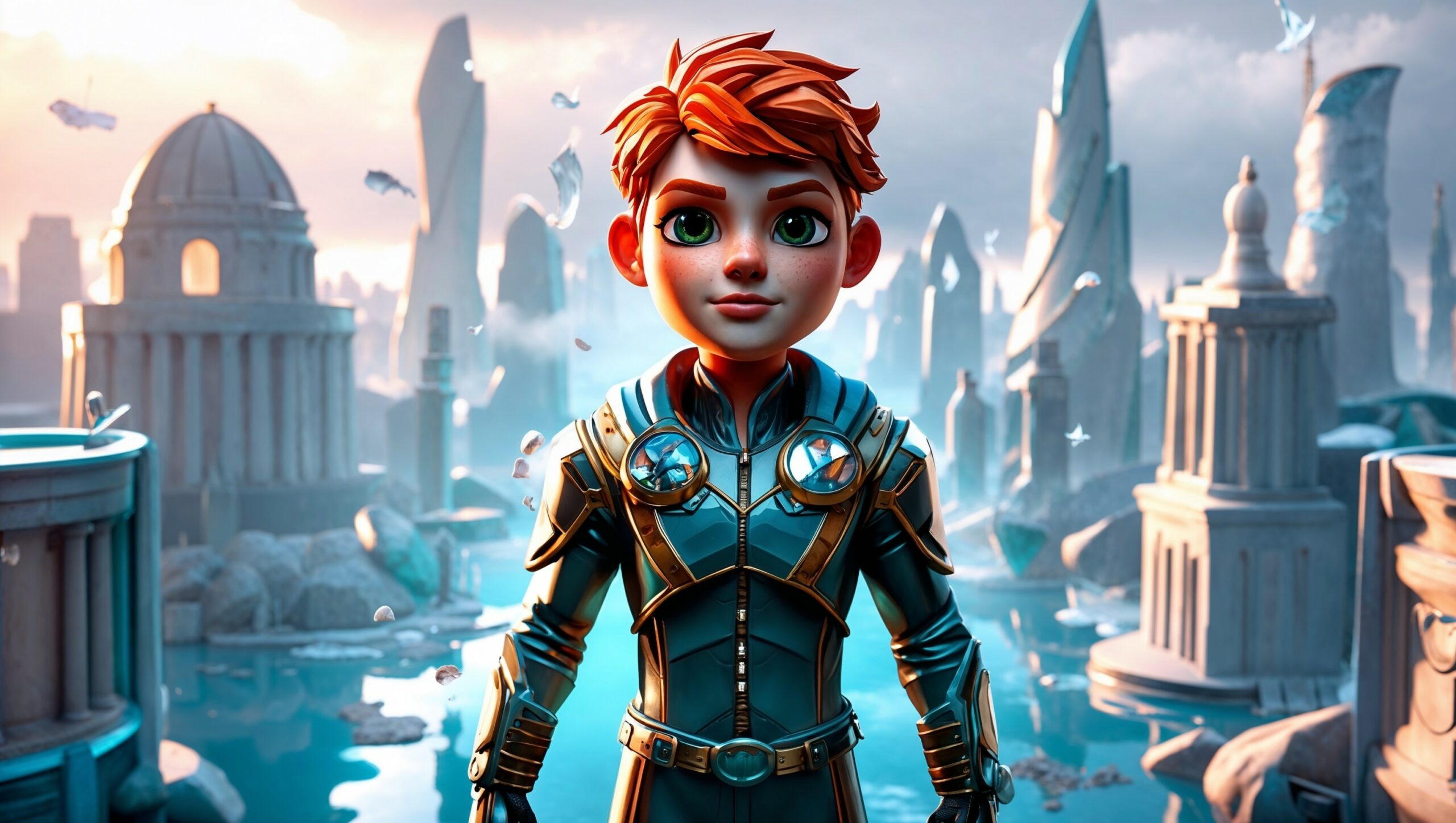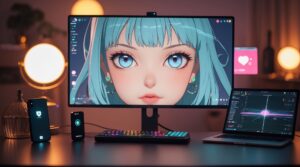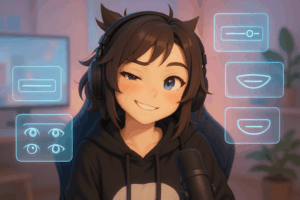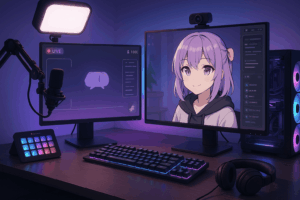Creating 3D games that captivate players and keep them engaged is a dream for every developer. As technology evolves, so do players’ expectations for innovative, fun, immersive, and visually stunning gaming experiences. In this article, we’ll dive into the essentials and art of 3D game development, offering insights, tools, and strategies to create hit games that players will love. Whether you’re a beginner or a seasoned professional, this guide will equip you with the knowledge to bring your vision to life.
What Makes 3D Games So Captivating?
3D games revolutionized the gaming world with their ability to provide depth, realism, and dynamic interactions during play. Unlike two-dimensional games, 3D games leverage three-dimensional graphics to create tangible environments and characters. Players enjoy the freedom to explore intricate worlds, connect with realistic characters, and experience gameplay that feels lifelike.
The Evolution of 3D Games
The journey of creation of 3D games began with simple wireframe models in the 1980s. Today, advanced game engines and tools allow developers to create breathtaking visuals and intricate gameplay mechanics. Popular engines like Unity and Unreal Engine have defined the modern era of 3D games, enabling studios to innovate and produce hits like Fortnite and The Legend of Zelda: Breath of the Wild.
Why Players Love 3D Games?
Players are drawn to 3D games because of their immersive environments, engaging storylines, and dynamic interactions. They can explore virtual worlds that mirror reality or defy it altogether, offering an experience that combines creativity and realism. This versatility makes 3D games appealing across a multitude of types of genres.
The Core Stages of 3D Game Development
Developing a 3D game involves several stages, each critical step in the process of ensuring a polished final product. Let’s explore the key steps:
1. Concept and Planning
Every great game begins with a solid concept. Define your game’s purpose, audience, and core features. For example, is it a fun and light-hearted mobile app or a deep and realistic console adventure? Use this stage to outline and describe your project or game’s storyline, characters, and gameplay mechanics.
2. Picking the Right Game Engine
The game engine is the backbone of running your project. Tools like Unity are beginner-friendly and versatile, while Unreal Engine offers unparalleled graphics quality. When choosing an engine, consider your team’s skill level, the game’s complexity, and available resources.
3. Designing Three-Dimensional Graphics
Creating three-dimensional graphics is one of the most intricate parts of the process of 3D game development. From modeling objects to applying textures, this stage requires attention to detail. Tools like Blender or Maya can be used to design characters, environments, and objects that will eventually populate your game world.
4. Coding and Gameplay Development
Coding is where the magic happens. This stage involves programming gameplay mechanics, character controls, and interactions. A well-structured codebase ensures efficient development and smoother updates. Tutorials and libraries available free online can help you learn or refine your skills.
5. Testing and Refinement
Testing ensures your app or game runs smoothly across devices and offers a seamless experience. It’s crucial to test your app for bugs, graphical glitches, and gameplay inconsistencies. Engage a community of beta testers to gather feedback and make improvements.
Key Features to Focus On in 3D Games
To create hit games, developers must learn to pay close attention to features that elevate gameplay and make play it memorable.
1. Immersive Environments
Detailed environments are a hallmark of successful 3D games. Combine realistic textures, lighting, and sound design to create worlds that players can lose themselves in.
2. Intuitive Gameplay
The gameplay should feel natural and intuitive. Whether players are running through a complex maze or solving puzzles, controls must respond accurately and smoothly.
3. Compelling Characters
Characters are the heart of many 3D games. Spend time designing their appearance, animations, and backstories. Players are more likely to connect with characters that feel alive.
4. Advanced Lighting and Effects
Lighting can dramatically change the mood of a scene. Use tools to create realistic light sources, shadows, and reflections that enhance your game’s visual depth.
5. Seamless Multiplayer Features
Adding multiplayer functionality can extend your game’s lifespan. A community of players sharing experiences in your game world fosters long-term engagement.
Tools and Technologies for Creating 3D Games
Thanks to the rapid evolution of web technology, developers now have ready access to a variety of tools and resources to streamline the creation process.
Game engines play a crucial role in game development, providing the foundation for creating immersive experiences. Unity is a popular choice due to its user-friendly interface and flexibility, making it ideal for beginners and small teams. On the other hand, Unreal Engine is renowned for its cinematic quality and is perfect for games that require high-end graphics.
When it comes to 3D modeling software, developers have several powerful tools at their disposal. Blender is a free and widely used tool for creating characters, objects, and environments, making it accessible for all skill levels. Meanwhile, Maya is an industry-standard software, offering advanced features tailored for professional 3D modeling.
Programming languages are another essential component of game development. C# is commonly used in Unity due to its efficiency and ease of learning, making it a great choice for developers. C++, on the other hand, is preferred in Unreal Engine for its performance and control, allowing developers to optimize their games for high-quality execution.
The Role of Web-Based Tools in 3D Game Development
Web-based tools and resources have revolutionized the way developers create 3D games. Educators and teachers can guide aspiring developers through every game creation stage with tutorials and services readily available online. These tools enable users to prepare for real-world projects, offering a clear view of the process from concept to completion. Developers can throw their ideas onto the screen and refine them using interactive features. Additionally, downloadable assets and services make it easier to stay ready for events like game jams or competitions, where creativity and preparation are key to success in this dynamic field.
Examples of 3D Games That Excel
Looking for inspiration? These 3D games showcase exceptional creativity and execution in the field of game development. Minecraft stands out as a global phenomenon, demonstrating how simplicity and creativity can captivate millions. Its blocky graphics and endless possibilities have made it a favorite for players of all ages.
Similarly, The Witcher 3: Wild Hunt has set a benchmark for RPGs with its breathtaking visuals, intricate character designs, and an immersive storyline that keeps players engaged. Lastly, the 3D edition of Among Us highlights how adapting a 2D hit into a three-dimensional experience can elevate gameplay, showcasing innovation and versatility in the gaming industry.
Ready to Create Your Hit 3D Games?
The process of creating 3D games is both challenging and rewarding. By focusing on innovative gameplay, immersive graphics, and compelling storytelling, you can design games that players will love. Whether you’re using Unity, Unreal Engine, or any other platform, remember that preparation, creativity, and team collaboration are key. Dive into the world of game development today. The tools, knowledge, and community support you need are just a click away. So, roll up your sleeves, pick up your favorite game engine, and bring your vision to life. The next hit game could be yours! Need stunning 3D assets for your game? Let 3DAiLY combine cutting-edge technology with artistry to bring your vision to life—30x faster and more affordable. Contact us today to get started!




